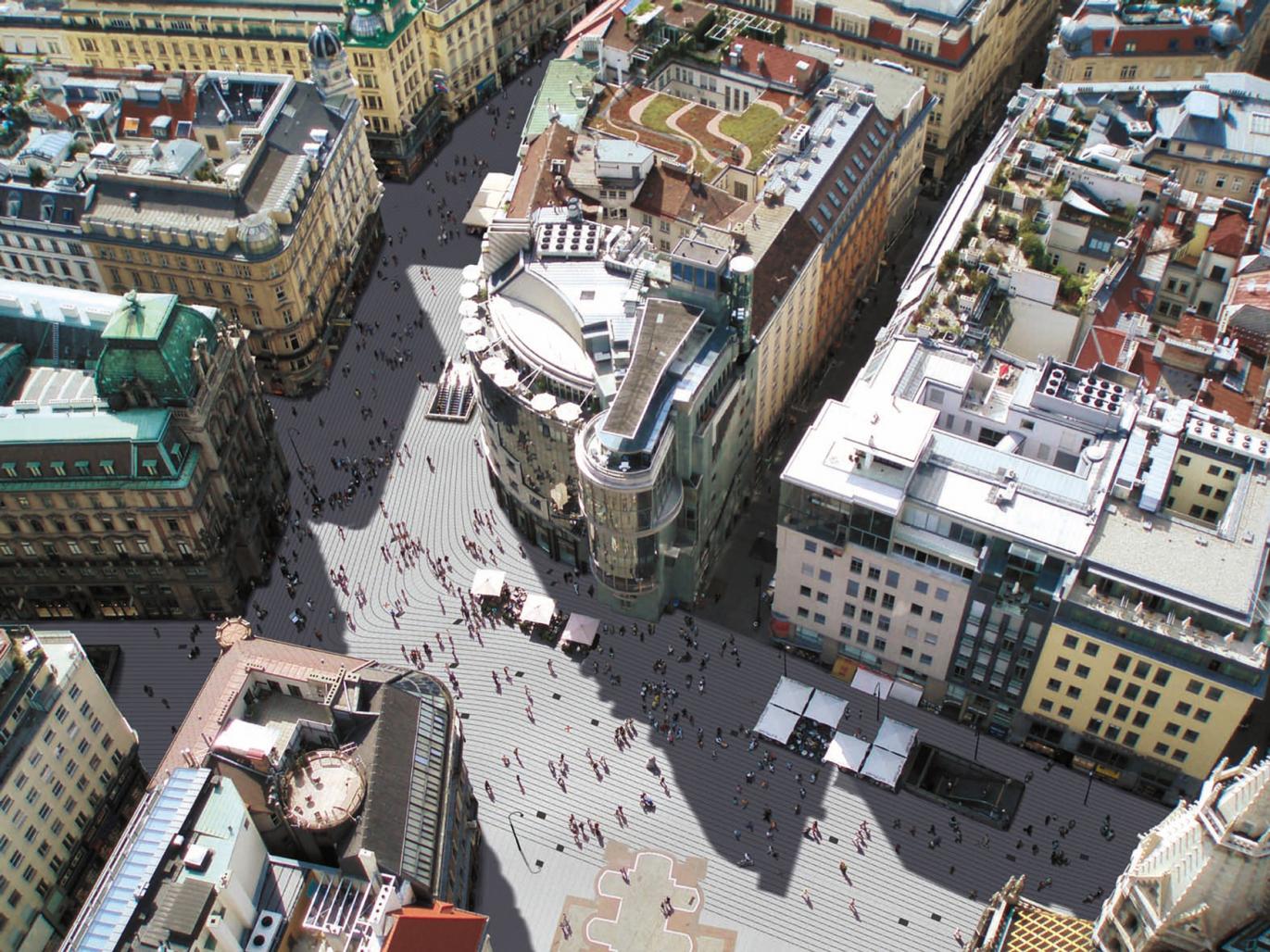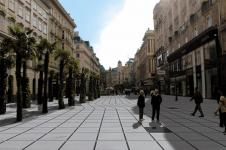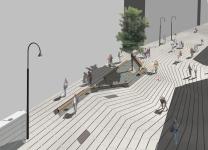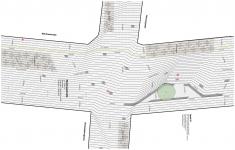The dynamic of directional movement as well as its perception in an urban context are the basis of the instant design for the pedestrian areas of Vienna City. All the special qualities of the location are emphasized, interpreted
and correlated by implementing a new system.
This system is based on the flowing characteristics of the traffic streams throughout Vienna?s 1st district. It also connects Knterstrasse, Graben, St. Stephen?s Cathedral and the Stock im Eisen to a new metropolitan unit.
The pattern of the surface design reacts to its surroundings (buildings, discharging streets, et cetera) and the new implemented elements (?islands?, chill out areas, et cetera).
By accentuating the lengthwise seams the pattern widens up at street crossings
and therefore establishes an impression of a special urban spot.
In contrast to this reaction the pattern narrows itself and shies away from important buildings to affect a subtle separation between forecourt and street.
The inserted ?islands?, conceived as ?calming influence?, act as stones in a river. The pattern of the pavement floats around with a little distance between them.
The extensibility of the pattern is open to all sides.
The fundamental materials in the design are concrete plates. By adding aggregates (natural stones, glitter, et cetera) it is possible to change the appearance of the concrete in many ways.
Because of its flexibility in form during industrial production it is the ideal material for this design. The client?s load class demands are concrete plates with a thickness of eighteen.
Particular plates of the central pattern of the design are out of black asphalt (ten centimetres strength). This design-measure is a reaction to the common corrective procedure: damaged parts of pavement are getting ?repaired? by pouring black asphalt in the resulted gap. That is how this stylistic element is used to influence the pedestrian areas? appearance.
In front of important public buildings huge formatted natural stone plates (Porphyr) are used.
Within the ?island? sections there will be traditional small stone granite plaster
(eight*eight*ten centimetres).
Additionally, the old fashioned Viennese
lanterns will be used because of their importance for the city?s image.
2008
2008
Lukas Goebl, Oliver Ulrich & Boris Steiner
Go With The Flow by Lukas Goebl in Austria won the WA Award Cycle 7. Please find below the WA Award poster for this project.
.jpg&wi=320&he=452)
Downloaded 134 times.
Favorited 1 times

.jpg)





